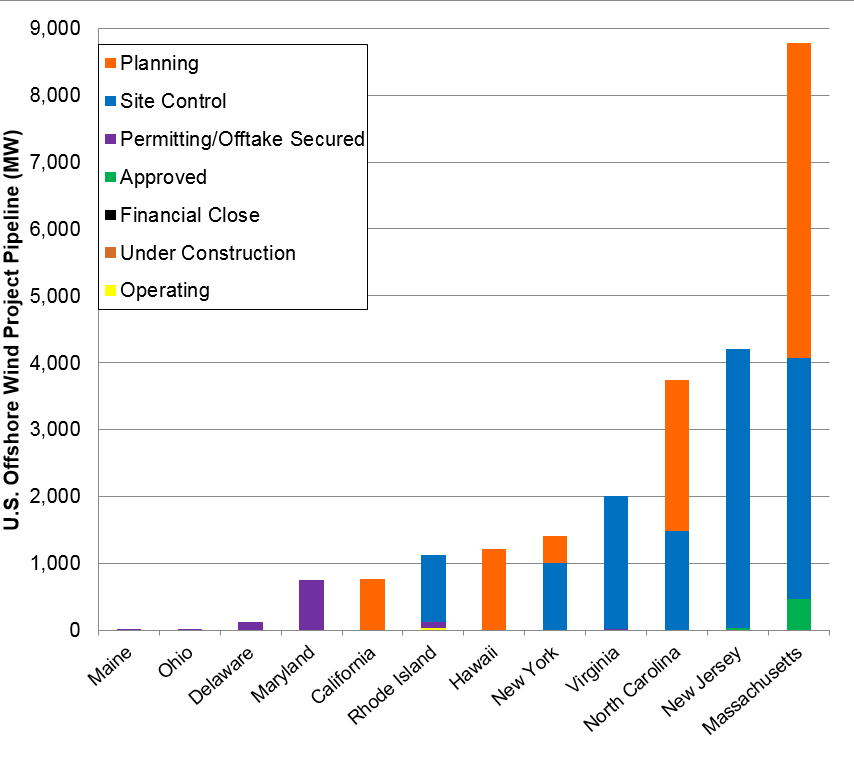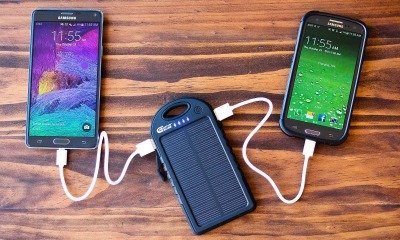Tech
Modern Technologies Shaping The Future Of Wind Farms

Wind turbines have now become as much as mainstream renewable energy sources. With advancement in turbine technology as well as supportive government policies, wind power is quite in completion with mainstream fossil fuel energy sources in terms of power cost and availability. However there is a lot of scope for improvement which includes also sometimes going into virgin terrains or to the unexplored. Offshore wind farms is one such technological challenge as well as a success story in today’s times.
In December 2016, after completing 4 months of test phase, Deepwater Wind’s “Block Island 30 MW Wind Farm” became the first operational offshore wind farm in the US. While offshore Wind power was already more established in Europe, due to various reasons it had not yet picked up in US. However current reports suggest that offshore wind farms may well be the next big energy opportunity in the US.
Status of Offshore Wind Farms in US
The so-called comparison: “America’s first offshore wind farm launched with GE turbines twice as tall as the Statue of Liberty” is apt when we think about the potential of this energy and the benefits it can provide to a country where a major portion of electricity consumption is in the coastal load centers and the present energy scenario is fraught with land constrained energy generation coupled with long distance energy transmission and losses. Five 6 Megawatt offshore wind turbines (manufactured by GE) have emerged as the first successful example of a nation who strives to meet its rapidly growly and already existing huge electricity demand (about 97 quadrillion BTUs, or about 18% of world’s total energy consumption).
A wind farm by definition refers to an area which generates power be means of a number of wind turbines. A statistic from US national energy department now provides that around 28 offshore wind farm projects, which have a proposed generation capacity of 23,735 megawatts are now in works.

Technological Challenges
The same report (page 24) also goes on to highlight the key emerging trends in US offshore wind technologies which include for example the up-scaling of wind turbines, installing wind turbines in deeper (farther) waters. As a technologies alternative, a trend in adopting floating wind turbine technology is also stated in this report.
But is all well here? Some questions do come to our mind as to why such a late adoption and what are the barriers which still exist in adopting latest technologies? Where are the technological gaps?
We start with the technological aspects. The US national offshore wind strategy lists out some of the major action areas to facilitate the sustainable development of offshore wind farms and the industry as a whole. One of the key strategic themes is reducing the costs and technology risks. The report highlights the need to better study the wind power resources and know the energy generation potential. Site characterization plays an important role and the report highlights the need to have more research on this aspect so as to provide proper input for cost optimal construction. Wind plant technology advancement comes as the next action area i.e. mainly the turbine size and efficiency feature as the key point towards optimizing the capital expenditure required per megawatt of power generation capacity. Last but not the least is having a cost optimal and risk reduced installation technology, advancements in operation and maintenance and next generation supply chain solutions.
Simulation and validation is a key success factor in planning such offshore wind farms. Simply put, analyse first with correct data and models and get the best results during the actual project implementation and operation. In this regard, the US National Renewable Energy Laboratory is leading a project (a collaborative project with 30 other countries) to compare model validation results with actual fatigue loads for both fixed bottom and floating type of offshore wind turbines.
And what are the risks? In plain words, a wind farm in offshore experiences the severity of the marine weather which is not comparable to that faced by onshore wind farms. This perhaps helps us understand why we require special construction techniques such as floating foundations.
Responses
Governments around the world have now understood this 21st century challenge and are making concrete steps to drive initiatives in this area. An example would be the offshore wind Accelerator project of the Scottish government. The OWA program brings together some of the leading offshore wind developers in Europe and talks about an investment amount of 1.5 million pounds. Some other technological projects such as enhancing the fatigue standards are also underway.
Let’s now have a look at the installed capacity for offshore wind farms, worldwide. The figures (source IRENA) indicate a worldwide installed capacity of over 14 Giga watts in offshore wind farms. This is very important upward trend, given the fact that the world’s first commercial-scale offshore wind power plant was commissioned by Denmark in year 2002.
When we compare the wind farm from offshore as a percentage of total wind energy installed capacity (ca. 467 Gigawatts), it only comes to around 3%. This is justified because in reality offshore wind farm is much more capital intensive and has far more technological risks. However offshore wind farms provide the promise of a much more energy abundance which can also be transmitted with more ease and across lesser distances. In general the US national offshore wind strategy rightly point out that there is a need for a supportive and national policy to harness the vast offshore wind potential of US coastal belt.
Conclusion
The state of offshore wind farms seems poised up for the next massive growth. The mood is upbeat and results are being witnessed. The power purchase agreement signed with the developers agree to supply energy from offshore wind power plants at a market competitive rates. Government and the business sector are working together to reap this huge source of renewable energy amidst technological advances and cohesive conditions.
-

 Tech11 years ago
Tech11 years agoCreating An e-Commerce Website
-

 Tech11 years ago
Tech11 years agoDesign Template Guidelines For Mobile Apps
-

 Business6 years ago
Business6 years agoWhat Is AdsSupply? A Comprehensive Review
-

 Business10 years ago
Business10 years agoThe Key Types Of Brochure Printing Services
-

 Tech8 years ago
Tech8 years agoWhen To Send Your Bulk Messages?
-

 Tech5 years ago
Tech5 years ago5 Link Building Strategies You Can Apply For Local SEO
-

 Law5 years ago
Law5 years agoHow Can A Divorce Lawyer Help You Get Through Divorce?
-

 Home Improvement6 years ago
Home Improvement6 years agoHоw tо Kеер Antѕ Out оf Yоur Kitсhеn











































